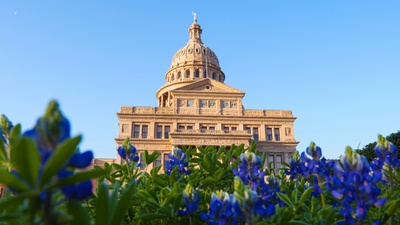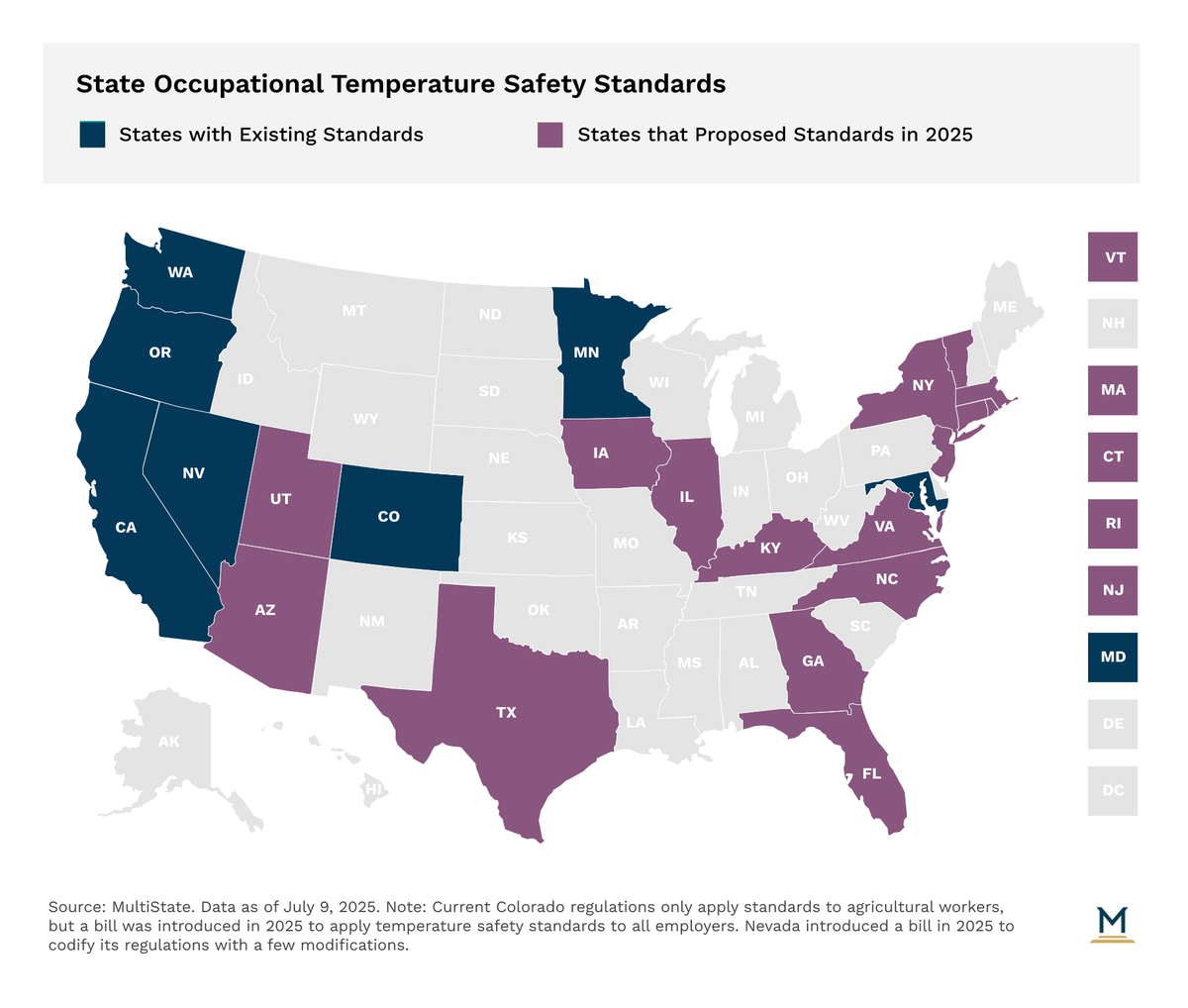
Employment & Labor
How States Are Combating AI Job Threats with Apprenticeships and Career Technical Education
September 16, 2025 | Lauren Johnson
July 16, 2025 | Sandy Dornsife

Key Takeaways:
While heat safety standard legislation was an emerging trend in the 2024 legislative session (and previous sessions), the issue gained significant momentum in the 2025 session. Such bills provide protections to individuals working in excessively hot conditions by establishing minimal employment standards, such as access to drinking water, shade and breaks, as well as heat safety training.
Currently, only seven states have adopted occupational heat safety standards including California, Colorado, Maryland, Minnesota, Nevada, Oregon, and Washington, although these standards have taken the form of regulations instead of statutes.
The scope of these regulations varies across the jurisdictions with California, Maryland, Nevada and Oregon including protections for both indoor and outdoor employees; Washington protecting only outdoor workers; Minnesota only protecting indoor workers; and Colorado even more narrowly applying their law solely to agricultural workers. Almost all of the states with regulations, however, are Democrat trifectas. The one exception is Nevada which has a divided government and whose regulations only recently went into effect in April 2025.
During the 2025 legislative session, eighteen states proposed legislation regulating heat safety standards; more than double the number of states in 2024. Notably, Nevada attempted to codify its employment heat safety protections in AB 414, however, the Democratically controlled legislature’s bill was vetoed by Republican Governor Joe Lombardo. Several states showed a particularly significant amount of activity, with Florida, Massachusetts, and New York accounting for a third of the forty-five total bills introduced across the nation.

Additionally, the majority of these bills did not only limit protections to workers in hot conditions, but addressed the needs of workers in colder conditions as well. Rhode Island’s SB 586, which managed to pass the Senate before stalling in the House, addressed employee safety protocols for both hot and cold extreme temperatures.
This transformation of heat safety standard proposals into legislation that more broadly addresses work performed in unsafe temperatures demonstrates an evolving understanding of the effects of climate change on employment. While only a few bills advanced past introduction in the 2025 legislative session, the sheer increase in interest in heat safety standards across the country signals that this trend will continue to grow. Climate change continues to cause the Earth to experience some of its most extreme temperatures, and these temperatures have seen a corresponding rise in bills dedicated to addressing occupational temperature related safety standards.
Currently, OSHA’s proposed heat regulations are bogged down in a bureaucratic process that could take years for federal approval, and, even then, fail to include protections for workers in excessively cold temperatures. In the interim, more and more states are attempting to fill this regulatory vacuum with their own legislation, and the number of bills will not only increase in 2026, but get closer and closer to enactment.
Federal and state legal activity can have significant policy and regulatory implications for businesses and organizations. If your organization would like to further track federal and state legal activity, please contact us.

September 16, 2025 | Lauren Johnson

February 26, 2024 | Townsend Brown

December 4, 2023 | Michael Greene